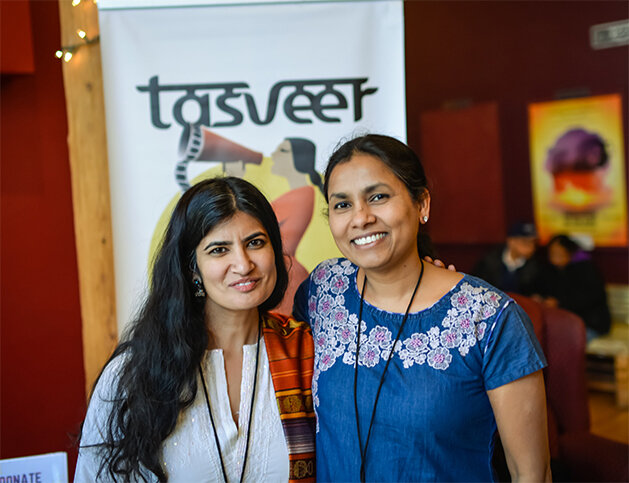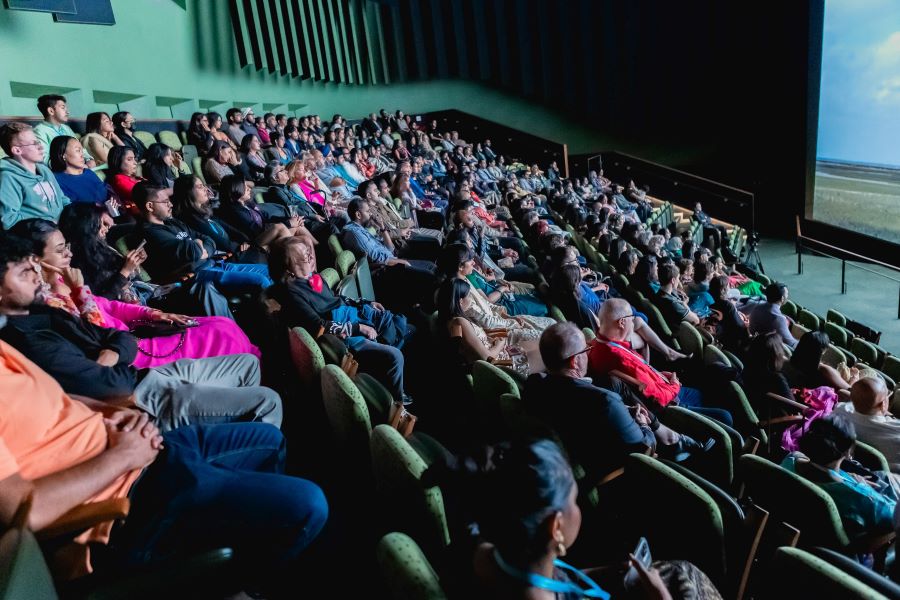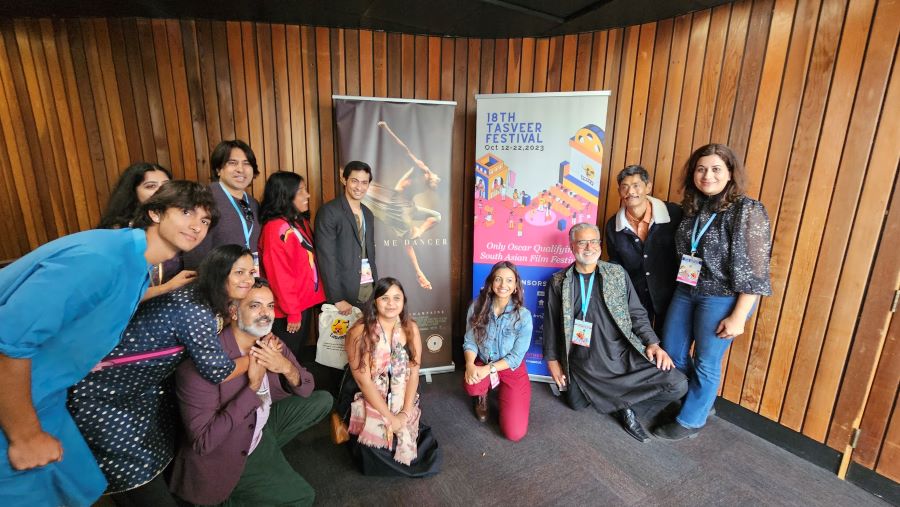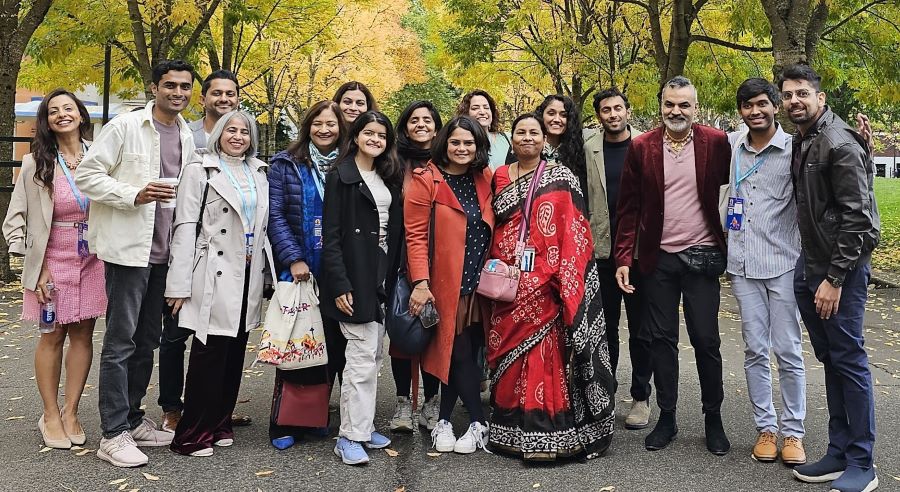BY JYOTHSNA HEGDE
Atlanta, GA, March 13, 2024: Never beg for a seat when you can build your own table, they say. That pretty much summarizes the inception of Tasveer South Asian Film Festival (TSAFF) by co-founders and friends Rita Meher and Farah Nousheen. The duo, troubled by the stereotyped and misleading images of South Asians in mainstream media and no seat at the table, decided to create their own table – a space to amplify underrepresented voices where storytelling is a ‘Tasveer’ (image) of society that channels social change through the artform.
An iconic moment in its history of advocacy for representation and inclusion of traditionally marginalized South Asian narratives and stories since its inception in 2002, the Seattle-based Tasveer Film Festival cemented its place on the list of coveted Oscar-qualifying festivals in September 2023. This recognition elevates Tasveer on par with international festivals such as Cannes, Tribeca, and Sundance.
TSAFF’s inclusion on the Academy’s Short Films Qualifying Festival List means that short films honored with the festival’s Best Short Film award now have the opportunity to compete in the Short Films category at the Oscars, provided they meet all the necessary requirements outlined in the official rules of the Academy.
As the first and only South Asian film festival to have earned the distinction, Tasveer opens new horizons for the promotion of South Asian narratives on the global cinematic stage.
In her interview with NRI Pulse, Meher delved into the inspiration for the organization, its humble beginnings, the incredible journey of trials and triumphs, its pinnacle of success, and future aspirations.
Since gaining the honor, Meher was excited to share that Director Elham Ehsas’s short film Yellow, which was submitted to the Oscars by TSAFF, has been shortlisted! Yellow tells the story of Laili (Afsaneh Dehrouyeh), who walks into a Chadari store in Kabul to buy her first full-body veil and face a new future. “It’s a great example for what we do, what kind of films we select.”
A culmination of many years of relentless perseverance and indomitable resilience, the present joy and pride of the Tasveer cofounder bears roots in having felt the weight of prejudice, fear, racism, hate and crimes that were on the rise against South Asians in the aftermath of 9/11.
Significance of the Recognition for South Asian Movies
“It’s definitely a great feat for not just this fee but all independent South Asian filmmakers. Because what it does is now South Asian filmmakers don’t have to go chase any big film festival like Sundance or Tribeca which gets almost 12,000 films. Those get submitted out of that. They show a handful of films, but there’s no guarantee that a South Asian filmmaker will get an award at that festival and get submitted to the Oscars. So, what it does for South Asian filmmakers is once they submit and get an award, which happens to be absolutely a South Asian Film Festival that will get an award in our festival – it puts them directly in line for the Oscar awards. So we push them onto the World Stage directly,” Meher expounded. “Our festival winners can directly compete in the Academy Awards run, allowing authentic South Asian narratives to shine on the grandest stage, unfiltered and unmediated.”

The Beginning
A few weeks after 9/11, as Meher was walking home in downtown Seattle, a man stopped at a red light and told her to “go back to your F—g country.” A defining moment in her life and career, Meher was taken aback. She confided her feelings with her best friend Farah Nousheen, who suggested that she make a film about her experience. “We thought film is a great tool to do that to spread the message of understanding and alleviating ignorance and then a phobia and hate.”
Meher picked up a camera and dived right into the world of cinema and went on to make a short film Citizenship 101, which set the impetus for founding Tasveer. Nousheen also made her own movie. That was not the end of the road though. It was only the beginning. The duo realized that despite their earnest efforts to create awareness of their identity as an immigrant population and South Asian community, the screening of movies of this nature were far and few between. There was a shortage of platforms to showcase meaningful movies and they decided to fill that void. In March of 2002, Tasveer came into being to recast the harmful labels by providing a glimpse into the lives of South Asians through film, art, and storytelling.
The Journey
Tasveer hosted its first screening at The Elliot Bay Book Company in 2002, during Pride Month. Ever since that first movie was screened, Tasveer became a renowned arts and culture fixture in the Greater Seattle Area. In 2004 was Tasveer’s launched its first film festival with a humble $5,000 that came in as a donation.
In 2007, Meher and Nousheen noticed the lack women’s stories coming to the film festival and decided to address it with Yoni Ki Baat – a South Asian adaptation of The Vagina Monologues. Even as the show has grown more popular, for many conservative audience members, there is kind of a taboo around the show, and watching a show with the word ‘yoni’ or ‘vagina’ in it. “They started telling stories about sexuality, or domestic violence.” While the first year people were “hush-hush” about the show, trying to remain unnamed and not wanting to be seen seated in the audience, eventually the outlook changed, Meher notes. “While initially women chose to remain anonymous and referred to their stories as someone else’s, a few years later they started sharing and owning their own stories and we are very proud of that.” The popularity grew and people proudly came out and watched and all shows sold out.

The Turning Point
“For the first 10 years or so, as a new immigrant to this country, I didn’t know how to run a nonprofit or what a nonprofit was,” Meher says. And when they started both she and Nousheen had full-time jobs. Nousheen moved on a few years later to New Mexico and Meher continued to work in TV stations and such. In 2010 however, Meher actually shut down Tasveer unable to balance work on both ends. But Tasveer had carved its place in her heart, never to let go. She hosted a festival in 2011 but shut it down in 2012. But that was only the beginning of the end.
“On March 4, 2012, around 1 or 2 pm I said no. I have to do this full time,” Meher recalls the exact moment when something struck her and struck hard. The heart had taken over the head and she decided to quit her well-paying job at Microsoft and the quest for continued success of Tasveer was back on!
“I contacted the city of Redmond, and they gave me a small office space,” Meher recalls. Her mind was made up to pursue her dream of revitalizing Tasveer as a formal nonprofit, despite the intimidating 35 page application for 501c that stared at her in 5X5 room with the $500 salary/month she decided to pay herself! And Meher never looked back since.
Branching Out – New Initiatives
When the pandemic hit, Tasveer initiated a fund for South Asian artists who were hurting as a result. Post-pandemic, the fund grew and today, Tasveer offers three prize grants for filmmakers. Having partnered with Netflix, Meher says, they support filmmakers not only with funding, but also provide a “direct access to Netflix.”
The Tasveer Film Market is an “exciting initiative on the horizon for 2024 for the organization,” Meher remarked.
Why Film Market?
“The filmmaking community is growing, and they need this space. There is nothing like a film market outside South Asia. And I want to bring that to the United States in October 2024,” Meher notes. Visualizing going beyond making films, Meher says it is important for “deals and connections” made. “I want the filmmakers to be supported by whatever they need – whether it’s finances distributors, Studio executives. I want them to meet with filmmakers and producers and make that relationship and collaboration. So, I want it (Film Market) to be the happening place. I want everyone to come whether they’re thinking about making a film, or they have a project already in mind or they need finishing funds. I want it to be huge in terms of being very productive, very result oriented.”
The Tasveer Film Fund, Meher said has grown but there is a lot more room for further expansion. “We are getting $25,000 per project, but we want to grow it to at least a $1 million project that is still a small-budget film. So hopefully someone will come in and do this for the filmmakers. Because we are still hugely underrepresented. We’re still under 3% according to USC Annenberg Hollywood report.”

Values that guide Tasveer
“We work to produce programs featuring films, art, and stories that demonstrate excellence both in creativity and quality,” Meher said about the kind of films that qualify for screening at TSAFF. “I love reading filmmaker statements and why they make a movie. We have very few slots, and we want to give it to the most highly deserving filmmaker. Why this story is being told is always in the back of our head.”
Tasveer believes in encouraging safe, respectful, and loving spaces for constructive dialogue around issues of race, gender, class, caste, religion, and sexuality that foster shared understanding. “South Asia” for Tasveer covers tales from Afghanistan, Bangladesh, Bhutan, India, Maldives, Nepal, Pakistan, Tibet, Sri Lanka, and their diasporas worldwide.
What constitutes success for a film festival?
“It’s a very tricky question, because success can be seen in many forms. But the most important thing as for me is that people have fun, and enjoying making necessary connections,” Meher notes. But on a personal level, Meher believes in relentless preparation and organization and most of all recognition and acknowledgment of each of her guests at the festival. Having attended many film festivals in the past, Meher stresses the importance of greeting attendees. “Just to say Hey, welcome to our festival. Hey so good to see you. You’re here. If you don’t get that greeting, it just feels like they are not seen or heard.” Meher says she would also love to hear feedback such as, “It was such a well-organized, amazing event. I had the best experience.”
Keeping up with activities/events of TSAFF
“The best way is to follow us on Instagram. You can follow us also on Facebook or join our newsletter or even simply go to the website – https://tasveer.org/ where we will put up all the deadlines for submissions.”
Submissions opened in February for the 19th TSAFF to be held in October 2024.
What is the role of cinema in society?
While she acknowledges that books are be equally effective, Meher observes that movies can be watched on YouTube or network, streaming networks and other places, and can be widely distributed at “lightning speed.” “Movies is nothing but storytelling. Storytelling is healing. Storytelling is acknowledgment of each other’s presence and existence. There is no other beautiful, powerful visual media,” Meher concludes.
‘Breaking Cinematic Barriers’ was the theme for 18th TSAFF in October last year. The festival featured 83 curated films, reflecting the vast diversity, range, and cinematic excellence of South Asia. The lineup included 23 features, 60 shorts, 20 documentaries, and 63 narratives, as well as work from 55 filmmakers, 33 of whom are female-identified, and spans 11 countries and 26 languages.
The unparalleled achievement of TSAFF of actually ‘Breaking Cinematic Barriers’ with the distinct status of an Oscar-qualifying film festival in the world is not just a significant milestone for Tasveer as an organization but for South Asian diaspora and its representation in Hollywood as well.
It is an interesting time for South Asian movies in Hollywood. In an unprecedented moment for South Asian representation in films, The Elephant Whisperers became the first Indian film to win best documentary short, and “Naatu Naatu” in RRR became the first Indian winner of best original song. While these stories are finally gaining mainstream recognition, they lingered in the shadows for decades. But South Asian narratives are still hugely underrepresented with under 3% according to USC Annenberg Hollywood report.
U.S is home many identity groups and it takes immense work to capture diverse stories and cultures on screen. General ethnic and multicultural labels are unable to convey uniqueness of each individual identities, and the richness of our population remains categorized by broad, generalized terms. For example, many on-screen portrayals of South Asians stereotype Asians as nerds, convenience store managers and cab drivers. With TSAFF’s commitment to uplift South Asian narratives, we can hope to avoid harmful stereotypes and look forward to true representation that is not just about inclusion but accurate portrayals that can lead to empowerment and a sense of belonging, especially among underrepresented groups. Inclusive content also fosters deeper understandings for viewers from majority backgrounds and identities.
Hopefully TSAFF, with its unique distinction will bridge the differences and break cinematic barriers.





